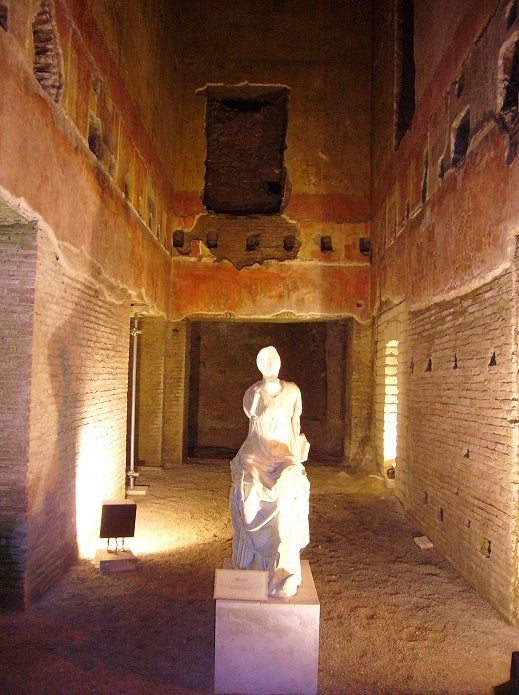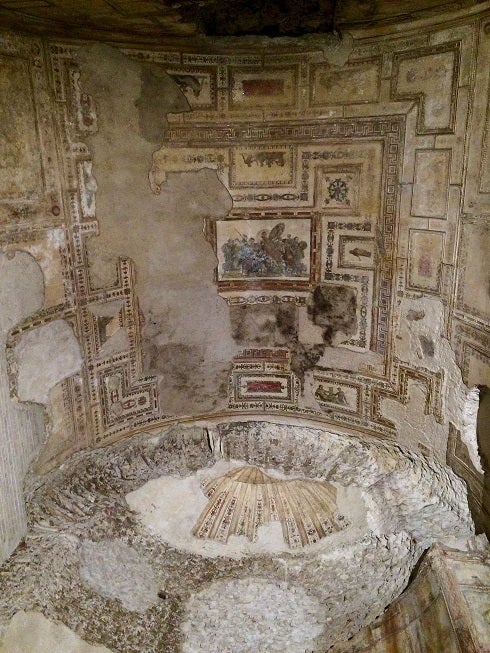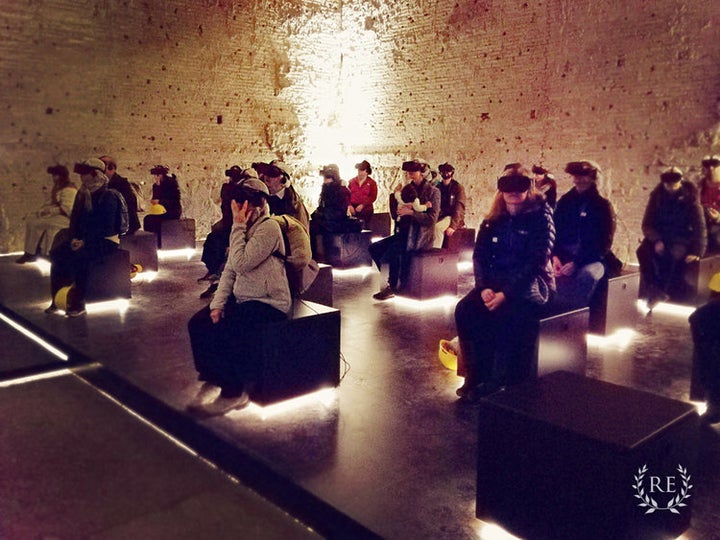Having lived in Rome for a few years, I can safely say that I’ve done all the main tourist attractions – some of them several times.
But the one thing on my Rome bucket list that I had yet to check off was the Domus Aurea. It was mostly a matter of practicality. For the past ten years, the Domus Aurea – Nero’s palace - has mostly been off-limits to the general public, as a result of ongoing restoration work.
At last, the Domus Aurea is open to the public. Keen to see the famous remains of Nero’s sprawling pleasure palace, I put on a yellow safety helmet and joined a tour of the Domus Aurea with Roma Experience.
Here’s why you should do the same:
1. You’ve never seen anything like it before
I’ve explored Roman ruins across Italy, but nothing like the Domus Aurea. As I descended into the dark tunnels of these labyrinthine ruins, I felt like I was on a genuine adventure – one of the privileged few who was getting to explore the ruins for the first time in centuries.
After Nero’s death, Trajan built over the remains of the palace, and over the centuries the vast complex was buried underground. It was rediscovered during the Renaissance, when a young man tripped, fell down a hole, and found himself in the cavernous, subterranean rooms of Nero’s palace. Other curious young men soon followed; they brought flaming torches and were amazed to discover beautiful, intricate frescoes. The painted figures of the Domus Aurea were a revelation to the artists of the Renaissance – a window into the world of antiquity. The frescoes had an immense influence on painters such as Raphael, and you can even see traces of the Domus Aurea in 18th century Neoclassical art.
As much as I’ve enjoyed my visits to other Ancient Roman sites, nothing compares to the thrill of discovery when you enter the Domus Aurea. Unlike the Colosseum, which you’ll have seen in countless paintings and photos before you visit for the first time, there’s nothing to prepare you for the Domus Aurea.

2. Amazing art (and atmosphere)
Although the marble and gilding has long since disappeared some other traces of decoration remain, in the form of delicate frescoes. These are the paintings that captured the imaginations of the Renaissance artists – faded figures of beautiful women, floral frescoes, and mythological scenes.
The art in the Domus Aurea has been damaged by water and the roots of the trees that grow above the roof, and it will take a significant amount of time – and money – to complete the necessary restoration work. However, while the paintings here are not the best examples of well-preserved ancient art, there’s something undeniably beautiful about their faded glory.

3. Discover the luxurious lifestyle of Nero
Nero has always been my favourite of the “bad emperors”. He was such an extreme character – an emperor who “fiddled while Rome burned”, who supposedly committed incest with his mother, kicked his pregnant wife to death, and then castrated and married a young boy.
While the worst stories about Nero are probably just gossip, there’s no doubt that Nero indulged in an extravagantly luxurious lifestyle. My Domus Aurea tour gave me deeper insight into his life of leisure. I learned how this enormous complex was built in just four years, using an expert team of architects and engineers, and how it was intended to be a “pleasure palace” rather than a place to live.
Suetonius gives us some idea of the extent of the Domus Aurea’s opulence:
There were dining-rooms with fretted ceils of ivory, whose panels could turn and shower down flowers and were fitted with pipes for sprinkling the guests with perfumes. The main banquet hall was circular and constantly revolved day and night, like the heavens.
Although the perfume and petals disappeared long ago, the explanations of the guide help to bring the past to life, giving you a real sense of what the Domus Aurea must have been like.

4. See Ancient Rome recreated right before your eyes
Before I went on my Domus Aurea tour I’d read something about the “3D reality experience”. I have to admit, I was slightly sceptical. I thought it sounded a bit gimmicky, and that it wouldn’t really add anything to the tour.
But I was wrong. For a start, these weren’t just glasses – there was a whole headset. Sitting in “the golden vault”, we put on our 3D headsets, and watched the bare walls and rubble transform into a luxurious, richly decorated chamber with a gilded ceiling and a view of a lush garden. All of a sudden, I was in a Rome where the Colosseum did not yet exist – where the site was still occupied by the vast artificial lake of the Domus Aurea – and where a 100 foot golden statue of Nero towered above the city.
A combination of the amazing graphics and the explanatory voice-over helped me to understand the geography of the ancient city. It’s not every day you get to stand in the gardens of an imperial palace and admire the views of Ancient Rome…
5. Help to preserve one of the most important archaeological sites in Rome
The remains of the Domus Aurea have been protected by the garden above it. But paradoxically, this garden is also contributing to its slow destruction. The weight of the earth is crushing the ceiling, the tree roots cracking through the walls, the water staining the frescoes. Before work can begin on the restoration of the artwork, the garden must be replaced with a lighter layer of earth, as well as a new drainage system.
How will this multi-million euro project be funded? Our guide explained that the survival of the Domus Aurea depends on its visitors. When you book a Domus Aurea tour, you’re directly contributing to the restoration of the archaeological site, preserving it for future generations.

